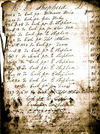
Summary of the sworn testimony of Samuel Drowne, March 16, 1770
- Subject:
- U.S. History
- Material Type:
- Primary Source
- Author:
- Susan Jennings
- Christopher Gilliland
- Nancy Schurr
- Linda Coslett
- Date Added:
- 02/03/2022

Summary of the sworn testimony of Samuel Drowne, March 16, 1770
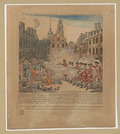
Smith, Sidney Lawton, Engraver, and Paul Revere. The bloody massacre perpetrated in King - Street Boston on March 5th, by a party of the 29th Regt. / engrav'd printed & sold by Paul Revere, Boston ; re-engraved by Sidney L. Smith. Boston Massachusetts, 1908. Boston, Mass.: Published by Charles E. Goodspeed. Photograph. https://www.loc.gov/item/2012648847/Embellished Engraving of the scene of the Boston Massacre by Paul Revere
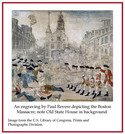
Students will analyze a picture of Paul Revere's Engraving and answer some guided photo analysis questions.
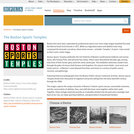
Boston Sports Temples celebrates the rich histories of Bostons professional stadiums and arenas. Some, like Fenway Park, still welcome fans today. Others were demolished decades ago, leaving only hints of their former glory amid the urban landscape. This exhibition welcomes modern fans through the gates of venues both famous and forgotten: the various home fieldsand courts and tracks and iceof Bostons most beloved franchises and hosts to a century of public events, concerts, and gatherings. Featuring historical photographs from the Boston Public Librarys extensive archives, Boston Sports Temples draws from thousands of negatives and prints dating from the early twentieth century through the 1960s. The images capture the unique character of Bostons historic sports venues, memorable moments, and the communities of athletes, fans, and staff who have come together within their walls. Together, these vintage materials provide an invaluable window into the past and a nostalgic look back at our city, our deep sporting traditions, and generations of passionate fandom. Created by the Boston Public Library.

This collection uses primary sources to explore the Boston Tea Party. Digital Public Library of America Primary Source Sets are designed to help students develop their critical thinking skills and draw diverse material from libraries, archives, and museums across the United States. Each set includes an overview, ten to fifteen primary sources, links to related resources, and a teaching guide. These sets were created and reviewed by the teachers on the DPLA's Education Advisory Committee.

On July 4, 1776, our founding fathers signed the Declaration of Independence to relieve our country of British rule. The colonists were tired of being bossed around by King George. In this seminar you will learn about one of the ways the colonists rebelled against the high taxes from Great Britain--the Boston Tea Party. By the end of this seminar, you will be able to construct support for the Boston Tea Party as a necessary risk taken by the colonists on the road to freedom.Standards5.1.4 D Identify key ideas about government found in significant documents: Declaration of Independence, United States Constitution, Bill of Rights, Pennsylvania Constitution
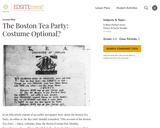
By exploring historical accounts of events surrounding the Boston Tea Party, students learn about the sources and methods that historians use to reconstruct what happened in the past.

Question In many high-grade metamorphic belts around the world, rocks were buried 20-30 km beneath the surface during deformation and metamorphism. How deep is that relative to the cruising altitude of a typical commercial airplane flying across the country?
(Note: this resource was added to OER Commons as part of a batch upload of over 2,200 records. If you notice an issue with the quality of the metadata, please let us know by using the 'report' button and we will flag it for consideration.)

Question
Over the last 70 million years or so, the Hawaiian Hot Spot has been pumping out lava, a total of about 775,000 km3 worth. As the Pacific Plate has moved over the hot spot, the volcanic peaks and plateaus of the Hawaiian-Emperor seamount chain have formed. If all of that lava had erupted in California, how deeply would California be buried in lava?
(Note: this resource was added to OER Commons as part of a batch upload of over 2,200 records. If you notice an issue with the quality of the metadata, please let us know by using the 'report' button and we will flag it for consideration.)

Question Suppose that you are building a new house. It will take about 90 kg (198 pounds) of copper to do the electrical wiring. In order to get the copper in the first place, someone needs to mine solid rock that contains copper, extract the copper minerals, throw away the waste rock, and smelt the copper minerals to produce copper metal. Rocks mined for copper typically contain only very small percentages of copper -- about 0.7% in the case of most of the big porphyry copper deposits of the world. How much rock would someone have to mine in order to extract enough copper to wire your new house?
(Note: this resource was added to OER Commons as part of a batch upload of over 2,200 records. If you notice an issue with the quality of the metadata, please let us know by using the 'report' button and we will flag it for consideration.)
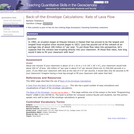
Question In 1983, an eruption began at Kilauea Volcano in Hawaii that has proved to be the largest and longest-lived eruption since records began in 1823. Lava has poured out of the volcano at an average rate of about 160 million m3 per year. To put those flow rates into perspective, let's suppose that the volcano was erupting directly into your classroom. At these flow rates, how long would it take to fill your classroom with lava?
(Note: this resource was added to OER Commons as part of a batch upload of over 2,200 records. If you notice an issue with the quality of the metadata, please let us know by using the 'report' button and we will flag it for consideration.)

Question Let's suppose that you have a shoe box full of water (the box is waterproof, of course). The shoe box weighs about 9 kg (19.8 pounds). Suppose you emptied the box and filled it completely with rock (little or no air space). How much would it weigh? Let's empty the box again and fill it completely with pure gold. How much would the box weigh now?
(Note: this resource was added to OER Commons as part of a batch upload of over 2,200 records. If you notice an issue with the quality of the metadata, please let us know by using the 'report' button and we will flag it for consideration.)

This list of botanical gardens and arboretums includes links to Web sites which you can search for institutions in your region. In addition, it includes detailed information about 14 of the country's largest botanical gardens and arboretums. Where possible, it includes the following information for each: mailing address and phone number, Web site and email address, details about its grounds and collections, and the type of support offered, including educational materials, resource libraries, and classes/workshops.
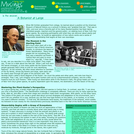
This online article, from the museum's Musings newsletter for educators, profiles two scientists who lead walking tours in New York City's green spaces. Bill Schiller, a botany lecturer and senior museum instructor, discusses the ways in which he "builds an appreciation of how nature works and a sense of responsible stewardship" during his tours. Bob DeCandido, an urban park ranger, explains how he "teaches city-dwellers to look closely at their wild neighbors and become better environmental stewards in the process." The article also includes ideas for four activities that can be completed during a walking tour.
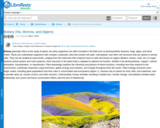
Botany generally refers to the study of plants, but other organisms are often included in the field such as photosynthetic bacteria, fungi, algae, and slime molds. Plants are multicellular organisms with complex, eukaryotic cells that contain cell walls, chloroplasts, and other cell structures that are absent in animal cells. They can be studied at many levels, ranging from the molecules that comprise them to cells and tissues to organs (flowers, leaves, roots, etc.) to organ systems (shoot system and roots systems). Each structure in the plant body is adapted to optimize its function, whether it be photosynthesis, support, nutrient absorption, transportation, or reproduction. Plant physiology explores the chemistry and physics of these functions, including how they respond to the environment, coordinate responses using hormones, gather energy and nutrients, and change throughout their life cycles. Plant ecology examines even larger scales, including plant populations and their roles in communities and ecosystems. Humans rely on plants for food, fiber, and medicines, and to provide clean air, erosion control, and other services. Unfortunately, human activities resulting in habitat loss, climate change, and pollution threaten plant biodiversity, but current and future conservation efforts slow the loss of biodiversity.
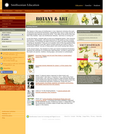
The lessons in this issue of Smithsonian in Your Classroom introduce the work of botanists and botanical illustrators, specifically their race to make records of endangered plant species around the world. “Very little of the world’s flora has been fully studied,” says one Smithsonian botanist, “and time is running out.” In the first lesson, students gets to know six endangered plants. They examine illustrations, photographs, and dried specimens of the plants as they consider this question: If a scientist can take a picture of a plant, are there advantages in having an illustration? They go on to consider some of the big questions that botanists themselves must ask: Which of these species are most in need of conservation efforts? Are any of these plants more worth saving than others?In the second lesson, the students try their own hands at botanical illustration, following the methods of a Smithsonian staff illustrator. All that is required for the lesson are pencils, markers, tracing paper, and access to a photocopier.

Working in teams of four, students act as botanists and use non-fiction on-line text to conduct Self Organized Learning System (SOLE) research to uncover the needs and life cycle of a plant for the school garden.
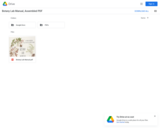
Each lab has a section that is intended to be completed prior to the start of the lab. This section includes formative questions, content and skill objectives, and an introduction to the topic. Formative questions are not intended to be graded for “correctness” and often lack any correct way to answer. Instead, these questions are intended to see what you might already know or think about the topic you are going to learn about. Content objectives list what you are expected to learn during the lab, while skill objectives list what you should be able to do after the lab. The introduction frames the lab content in context of larger topics within the field of science and highlights specific concepts that will be covered within the lab. Later labs focused on learning different organismal groups also contain a section called selection pressures and drivers that explains what conditions this group of organisms evolved in response to.

Botany, also called plant science(s), plant biology or phytology, is the science of plant life and a branch of biology. A botanist, plant scientist or phytologist is a scientist who specialises in this field.

Botany, also called plant science(s), plant biology or phytology, is the science of plant life and a branch of biology. A botanist, plant scientist or phytologist is a scientist who specialises in this field.